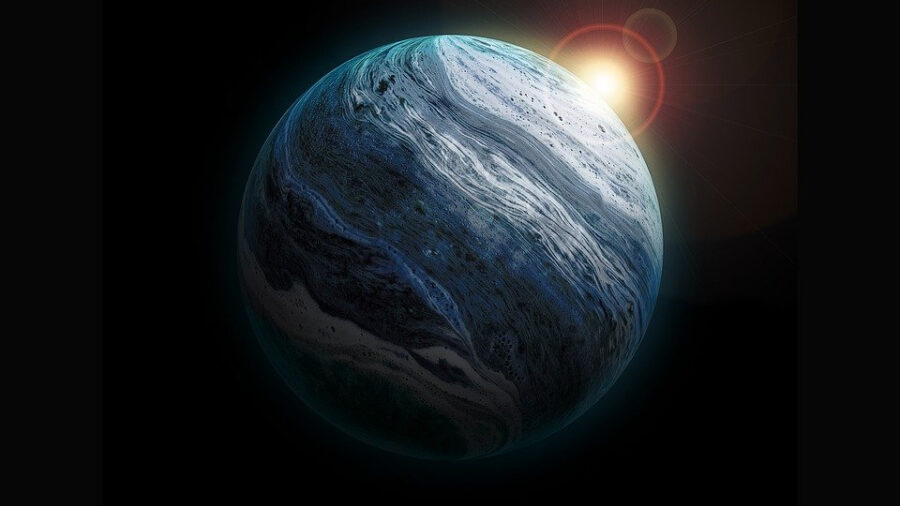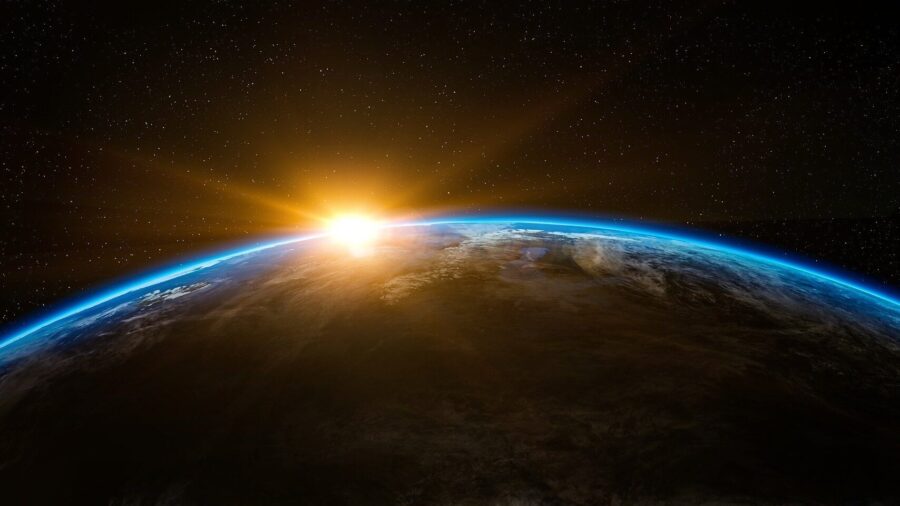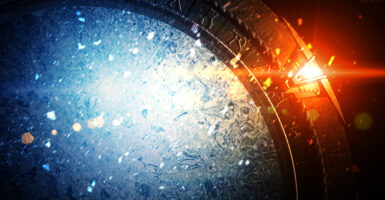Scientists Find Massive Planet Made Of One Solid Metal

The more we learn about the universe, the more we realize that the further out in space you go, the weirder it gets. According to Science Alert, scientists recently discovered a planet about the size of Earth made entirely of solid iron. The planet is called Gliese 367 b, but its nickname is Tahay, and the more we learn about Tahay, the stranger this iron planet becomes.
Gliese 367 b, nicknamed Tahay, is an impossibly dense planet made up of iron.
Although the planet is about the size of Earth, it’s considered an Ultrashort Period (USP) planet, a type of planet that takes less than a day to orbit its star. Despite being incredibly dense, this iron planet only takes 7.7 hours to complete its orbit — less time than it would take you to binge an entire season of your favorite show.
But it’s ultrashort orbit isn’t what makes Tahay unique. In fact, in our registered list of about 5,000 exoplanets (planets from outside our solar system), 200 other planets join Tahay in its extremely quick orbit. However, as far as we know, these other space orbs aren’t densely thick iron planets like Tahay.
It’s highly unusual to discover an iron planet like Tahay. Scientists first found Tahay in 2021 using a powerful satellite called TESS (Transiting Exoplanet Survey Satellite) and have since been wondering how Tahay came to be a giant ball of iron floating around in distant space. The most likely explanation is that Tahay was once a rocky planet like Earth with an iron core and that something must have happened to strip away the rocky shell so that the core was the only thing left.
Scientists believe Tahay was once more like Earth, before becoming an iron planet after being stripped to the core.
To understand Tahay’s true nature, astronomers used the High-Accuracy Radial Velocity Planet Searcher (HARPS) spectrograph at the European Southern Observatory. Their initial findings suggested that this iron planet’s mass was 55 percent of Earth’s, and its radius was 72 percent of Earth’s.

Additional HARPS observations reveal that Tahay is even denser than previously thought, with a mass now at 63 percent of Earth’s and a radius at 70 percent of Earth’s. In simpler terms, Tahay is twice as dense as our planet, making it one of the densest USP planets known to us. But how did this iron planet become so dense?
Since the most likely explanation is that it was once a planet like Earth that got stripped to its core, we have to guess that a series of catastrophic collisions in its early days led to the loss of its outer layers, leaving behind the dense iron planet we observe today. Alternatively, Tahay might have formed in an unusually iron-rich region of its protoplanetary disc, although this is less likely. A third possibility is that it was once a massive gas giant, similar to Neptune, which migrated too close to its star and had its gaseous envelope mercilessly stripped away by intense irradiation.
The iron planet’s mass is 55 percent of Earth, with a radius of only 77 percent of our planet, making it far more dense.
Adding another layer of complexity to this iron planet cosmic puzzle, astronomers have uncovered two sibling planets in the Gliese 367 system: G 367 c and d. USP planets often come in groups, reinforcing the idea that these oddballs thrive in close-knit families. These newfound companions orbit their star closely but have lower masses, raising questions about their formation in an iron-rich environment.
In the end, the Gliese 367 system is just one other aspect of space that we as humans have yet to fully understand. The more we seem to learn, the more we begin to realize that we don’t know anything about the cosmic foundations of the universe. While we may one day discover how Tahay came to exist as an iron planet, scientists will have uncovered many more cosmic mysteries, raising more questions that may never be answered.












